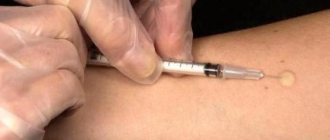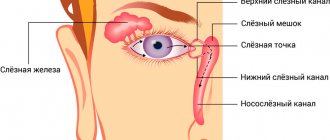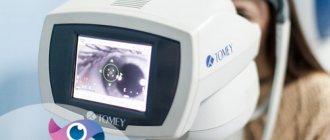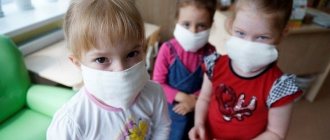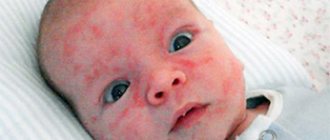Author: Datsenko S.A., infectious disease specialist. April, 2021.
ICD-10 codes: A28.2. Pseudotuberculosis. A04.8. Pseudotuberculous enterocolitis.
Pseudotuberculosis is an infectious disease with varied symptoms that affects the liver, intestines, joints, skin, and less commonly other organs. Complications develop rarely, and the overall course of the disease is favorable. Pseudotuberculosis is treated with a course of antibiotics.
Pseudotuberculosis is a bacterial infection that occurs through consumption of contaminated water and food. The bacterium affects different organs, so the symptoms of pseudotuberculosis are varied. Most often the skin and joints, organs of the gastrointestinal tract are affected.
Pseudotuberculosis is part of the group of yersiniosis - diseases caused by the Yersinia bacteria. Also in this group are true yersiniosis and plague.
Pseudotuberculosis is distributed throughout the world, mainly in European countries. Russia is considered an endemic area for pseudotuberculosis. Outbreaks of the disease are recorded in Central Russia, the Far East, and the Far North.
Seasonality of incidence is observed. Most cases occur from March to July and from October to December. In different regions, the incidence ranges from 1 to 8 cases per 100 thousand population. On average in Russia this figure is 2.2 per 100 thousand population.
People of different ages are affected, but the highest incidence is observed among children aged 3-14 years.
Causes and risk factors
The causative agent of the disease is a bacterium called Yersinia pseudotuberculosis. The bacterium is capable of:
- stick to the surface of the intestinal mucosa;
- penetrate into cells and damage them;
- multiply inside epithelial cells and the immune system.
All this explains the damage mainly to the intestines, skin and joints.
The main location of the bacterium in nature is soil and water. The secondary reservoir and source of infection are mammals, amphibians, fish, and insects. Among them, the main carrier of bacteria is wild and domestic rodents. A person rarely becomes infected from them, and is not himself a source of infection - that is, a person with pseudotuberculosis is not dangerous to others.
People become infected with pseudotuberculosis by drinking water and food contaminated with the feces of sick animals. Main transmission factors:
- thermally unprocessed vegetables and herbs;
- sauerkraut, pickled cucumbers;
- fruits;
- dairy products;
- drinking unboiled water from springs, streams, etc.
Rarely, infection occurs through inhalation of dust contaminated with animal excrement.
Pseudotuberculosis
Pseudotuberculosis is an infectious disease caused by Yersinia pseudotuberculosis, transmitted through nutritional means and characterized by a polymorphism of clinical manifestations: intoxication, fever, damage to the gastrointestinal tract, skin, musculoskeletal system and other organs. In accordance with the International Classification of Diseases (ICD 10th revision, 1995), pseudotuberculosis is registered under the symbol A28.2, and pseudotuberculous enterocolitis is registered under the symbol A04.8.
Intestinal yersiniosis is an infectious disease caused by Yersinia enterocolitica, transmitted through nutritional means and characterized by intoxication, predominantly affecting the gastrointestinal tract; in generalized forms - multiple organ damage and a tendency to exacerbations, relapses and chronicity of the process. Yersiniosis in accordance with the International Classification of Diseases (ICD 10th revision, 1995), enterocolitis caused by Y. enterocolitica is registered under the symbol A04.6, extraintestinal yersiniosis - under the symbol A28.2.
The causative agent of pseudotuberculosis is Y. pseudotuberculosis, intestinal yersiniosis is Y. enterocolitica.
Yersinia can survive for a long time in the environment: in soil they can exist for more than 4 months, in open water - up to 1 month, in boiled water - up to 1 g. They can survive for a long time on various foods: in milk for up to 18 days. , in butter up to 145 days, on bread, confectionery - from 16 to 24 days. They multiply and persist for a long time on vegetables, especially in the form of salads, stored after cooking at low temperatures. In feces at a temperature of (22 +/- 2) °C they survive up to 7 days, in frozen feces - up to 3 months.
Yersinia is sensitive to high temperatures: at 100 °C they die within 1 - 2 minutes. Able to survive at temperatures of 50 - 60 °C for up to 20 - 30 minutes, tolerate high concentrations of sodium chloride (up to 10%), especially at temperatures from 4 to 6 °C. Direct solar radiation has a detrimental effect on microbes; they are sensitive to drying and to disinfectant solutions (1 - 3% solutions of chloramine, bleach, hydrogen peroxide).
A natural focus of yersiniosis is considered to be a certain landscape area of the territory in which the natural circulation of yersinia occurs among the wild mammals living there, mainly mouse-like rodents and birds.
The anthropurgic focus of yersiniosis is considered to be a populated area where the chain of natural circulation of Yersinia includes synanthropic (house mouse, gray rat) and semi-synanthropic (common voles, field mice) rodents that massively populate the outskirts of cities. By polluting the environment (feed, water) and being the object of hunting, rodents contribute to the infection of agricultural (cattle and small livestock, pigs), domestic (cat, dog, ornamental pets) animals and birds, as well as animals kept in nurseries and zoos.
An anthropurgic focus poses an epidemiological danger, since it poses a risk of human infection through the consumption of food products contaminated with Yersinia, as well as through professional (household) contact with agricultural and domestic animals, birds and environmental objects.
The role of animals as sources of infection for humans is unequal. In case of intestinal yersiniosis, priority is given to pigs, since it is from them that the largest number of pathogenic strains of Y. enterocolitica O:3 and O:9 are isolated. In case of pseudotuberculosis, small and large livestock are of significant importance.
A person with pseudotuberculosis does not pose an epidemiological danger; with intestinal yersiniosis, a patient or carrier in a hospital or family setting can be a source of infection for others.
The fecal-oral mechanism of transmission of yersiniosis is realized through the food route through direct (with raw and thermally poorly processed food products) or indirect (through equipment, equipment or utensils) entry of the pathogen into prepared food; secondary accumulation of the pathogen in ready-made dishes (in case of violation of the cooking technology of the latter and an increase in their shelf life); rarely - through household contact (when caring for sick agricultural, domestic or captive animals, cutting meat and poultry) and water transmission.
The main factors of transmission for pseudotuberculosis are products of plant origin (vegetables, root crops, herbs, fruits), and less commonly, water from open reservoirs. The accumulation of the pathogen on vegetables and root crops with contamination of containers, walls and floors occurs in vegetable stores and warehouses of organized groups and catering establishments, when the temperature and humidity conditions are violated and infected rodents populate. Plant products are subject to infection when stored for storage with an increase in contamination with the pseudotuberculosis microbe in February (winter vegetables), April-May (early vegetables, including greenhouse vegetables) and August-September (summer vegetables). Plants can become infected with Yersinia during cultivation (in fields, in greenhouses) by contact with soil and by watering from a water source contaminated with the pathogen. In this case, there may be no direct connection between diseases and rodents, since epizootics among them and primary infection of vegetables occur far from the place where group diseases are recorded.
In intestinal yersiniosis, the leading transmission factors are products of animal origin (dairy products, meat and meat products, poultry products), consumed raw or thermally insufficiently processed or secondary contaminated. The importance of vegetables and fruits as factors of infection transmission is lower than with pseudotuberculosis.
A condition conducive to human infection with Yersinia is a violation of the sanitary and epidemiological regime in the catering units of organized groups and public catering establishments. For pseudotuberculosis, this means poor-quality peeling of vegetables, soaking vegetables overnight, lack of repeated rinsing with hot water, storing prepared salads in the refrigerator. In case of intestinal yersiniosis - violation of the regime for collecting and processing meat and dairy products, long-term storage of raw products contaminated with the pathogen at low temperatures, insufficient heat treatment, violation of the deadlines for the sale of ready-made dishes, violation of the milk pasteurization regime. Infection of persons professionally associated with livestock and poultry farming is possible when removing internal organs, cutting animal meat (cutting out the tongue and tonsils, cutting meat from the head) and poultry carcasses, and during the preparation of semi-finished products.
The incidence of pseudotuberculosis and intestinal yersiniosis is recorded everywhere, but unevenly.
On the territory of the Russian Federation, group cases of pseudotuberculosis are more often recorded, occurring in preschool institutions, schools, boarding schools, in suburban children's groups, military units, in enterprises or in educational institutions united by a single power source. Intestinal yersiniosis is characterized by sporadic incidence; group cases are rare. There may be nosocomial diseases in patients with reduced body resistance associated with blood transfusions stored for a long time at low temperatures, and intrafamily cases limited to children and relatives caring for them.
Pseudotuberculosis and intestinal yersiniosis affect all age groups, but the majority of cases occur in children aged 3–6, 7–14 years and adolescents aged 15–17 years. The incidence of children under 1 year of age with pseudotuberculosis is associated with the inclusion of vegetables and fruits (juices, purees) in the diet; with intestinal yersiniosis - artificial feeding, household contact with the patient (carrier).
Pseudotuberculosis is characterized by an extension of the seasonal rise in incidence until the summer months, the timing of which depends on the time of delivery, storage and sale of vegetables to the population. With intestinal yersiniosis, there is a slight spring-summer and pronounced autumn-winter increase in incidence.
In order to localize and eliminate the source of yersinia infection, a set of sanitary and anti-epidemic (preventive) measures is carried out. It includes:
- Active identification of patients by questioning, examination and door-to-door (door-to-door) visits;
- Medical observation of persons who are in the same conditions as the patient regarding the risk of infection (18 days);
- Taking material from patients and suspects of the disease, as well as samples from environmental objects for bacteriological, serological and molecular genetic studies (PCR);
- The introduction of a temporary ban on the preparation of cold meat snacks and dairy products that are not subject to heat treatment; the consumption of salads made from raw vegetables and fruits without processing is prohibited;
- Organizing in warehouses (vegetable storehouses, catering units) sorting, stripping of vegetables, fruits, stripping of containers and equipment, followed by final disinfection;
- In the event of widespread distribution of rodents in a populated area, the issue of carrying out complete deratization for epidemic indications is decided;
- Introduction of enhanced supervision over the water supply system, landscaping, catering and compliance with the anti-epidemic regime of children's organized groups, catering units of public catering establishments and medical and preventive organizations;
- Organization of work with the media on the prevention of yersiniosis among the population on the initiative of the bodies exercising state sanitary and epidemiological surveillance.
Patients are discharged after complete clinical recovery and normalization of all indicators of the functional state of those who have recovered from the disease, without conducting control laboratory tests for pseudotuberculosis and intestinal yersiniosis, according to the decision of an infectious disease specialist.
Recovered persons are monitored at a clinic. Monitoring of ill children is carried out by local pediatricians, for adults - by infectious disease doctors at the clinic, and in their absence - by local therapists. Dispensary observation is carried out for 1 month after discharge from the hospital for uncomplicated forms, for a protracted course - for at least 3 months.
Admission to work for staff of children's institutions and children to attend children's organized groups is carried out on the basis of a certificate of recovery.
In order to prevent contamination and proliferation of Yersinia on vegetables in vegetable stores, fruit and vegetable stores, and greenhouses, the following activities are carried out:
- Vegetable and fruit storage facilities are being prepared for receiving new crops for storage: storage facilities are being emptied of remnants of winter vegetables and debris; drying and disinfection of racks, walls, ceilings and equipment, followed by ventilation and whitewashing. The effectiveness of disinfection is assessed by the absence of microbes of the genus Yersinia in the washings.
- Vegetable storage facilities must maintain a certain microclimate with strict temperature parameters not exceeding 4 °C and relative humidity up to 70%.
- Maintaining the sanitary and hygienic condition of fruit and vegetable warehouses, timely clearing them and the surrounding area from vegetable residues and industrial waste, disinfecting containers before sending them to product suppliers.
- Maintaining in satisfactory sanitary and technological condition automobile and other types of transport intended for the transportation of vegetables and fruits.
- Timely and high-quality sorting of vegetables, thorough cleaning of spoiled and rotting areas of vegetables and fruits.
- Preventing the joint storage of vegetables (fruits) of new and old harvests, preparing a separate room for storing early vegetables with regular (once a month) cleaning and disinfection.
- Compliance with greenhouse processing technology, including soil after harvest, cleaning dirty and replacing worn-out containers.
- Regular implementation of deratization measures and basic measures to protect the facility from rodents in accordance with current regulatory legal documents.
- In vegetable storehouses, fruit and vegetable warehouses and greenhouses, as part of production control, regular studies are carried out to identify rodents infected with Yersinia (quarterly), the contamination of vegetables, fruits, utensils, containers, equipment with Yersinia (taking into account the epidemiological situation, but at least once a quarter), in greenhouses - during the harvest period. If pathogens are detected, unscheduled disinfection, deratization, sorting of fruits and vegetables, cleaning or replacement of racks and containers are carried out.
- In vegetable storehouses of organized groups and medical institutions, laboratory tests for the contamination of vegetables, fruits, utensils, containers, and equipment with Yersinia are carried out 2 - 3 weeks after the planting of new crop vegetables and before delivery of early vegetable products for storage.
(material prepared on the basis of Sanitary Rules 3.1.7.2615-10 “Prevention of Yersiniosis”)
Forms of the disease
In Russia, the Yushchuk classification of pseudotuberculosis has been adopted.
Clinical forms:
- abdominal - with damage to the liver, intestines;
- mixed - proceeds like scarlet fever or sepsis;
- secondary focal - the skin and joints are affected.
By severity:
- light;
- moderate severity;
- heavy.
If the disease lasts up to 3 months, it is called acute. If it lasts more than 6 months, it is a chronic form.
Symptoms of pseudotuberculosis
The incubation period is the time from bacteria entering the body until symptoms appear. In pseudotuberculosis this period is 3-19 days, more often 5-10. There are several periods during the course of the disease:
- initial - lasts 2-5 days;
- height - at this time symptoms characteristic of a specific clinical form appear, lasts 10-30 days;
- recovery.
The initial period is the same for all forms of pseudotuberculosis. The following symptoms are observed:
- severe malaise;
- temperature rise up to 40 degrees;
- headache;
- insomnia;
- pain in muscles and joints.
Some patients complain of abdominal pain, nausea, vomiting, and loose stools.
Upon examination, you can see redness of the oral mucosa and swelling of the tonsils. The whites of the eyes also turn red, and a spotty rash appears on the face, palms and feet, and thighs. The tongue turns crimson. It is more convenient to consider the symptoms of various forms during the height of the period in the table.
| Clinical form | Manifestations |
| Mixed | The main symptom is a rash that appears on days 2-7 of illness. Reminds me of the scarlet fever rash - small red dots. Less commonly, it is large-spotted, with blisters and vesicles. The rash is located on the face and throughout the body, thicker in the skin folds. After 3-6 days, the skin begins to turn pale and the skin at the site of the rash peels off. Pain in joints and muscles is severe. All joints are affected, pain persists for up to 3 weeks. They stop suddenly. Some patients experience moderate pain in the lower abdomen. The temperature normalizes by the 4th day of illness, less often it persists as a low-grade fever for up to two weeks. |
| Septic | It is rare, the mortality rate reaches 40%. Proceeds like sepsis of any other origin:
|
| Abdominal | More common in children. The main symptom is severe paroxysmal pain around the navel or in the right side. Therefore, patients are often first hospitalized in the surgical department with suspected acute appendicitis. When the intestines are damaged, nausea, vomiting, and diarrhea occur. |
| Secondary focal | The main manifestation is erythema nodosum. Large red nodules form under the skin, painful to the touch. The lower extremities are usually affected. |
Photo: variant of the rash with pseudotuberculosis
The beginning of recovery is indicated by normalization of temperature, reduction of pain in muscles and joints, and improvement of well-being. The recovery period takes 2-3 weeks.
What can the symptoms of pseudotuberculosis be confused with?
The symptoms of pseudotuberculosis are similar to those of other diseases. To distinguish them, you need to pay attention to little things - the onset of symptoms, the features of its changes. Pseudotuberculosis and yersiniosis are most similar, since these are diseases from the same group. The difference is in the onset of the disease - with yersiniosis, frequent loose stools mixed with mucus and blood always appear. With pseudotuberculosis, diarrhea is rare.
The abdominal form of pseudotuberculosis should be distinguished from appendicitis. The table shows the main differences.
| Sign | Pseudotuberculosis | Appendicitis |
| Seasonality | Yes - the beginning of summer and the end of autumn. There are outbreaks of disease. | There are no seasonality or outbreaks. |
| Initial symptoms | A sharply high temperature, severe malaise, then abdominal pain. | First there is pain in the abdomen, then the temperature gradually rises, and malaise increases. |
| Rash | Eat | No |
| Language | Crimson | Coated, dry |
| Nausea and vomiting | Rarely | Often |
The mixed form of pseudotuberculosis should be distinguished from influenza, meningococcemia, and scarlet fever.
| Sign | Pseudotuberculosis | Scarlet fever | Meningococcemia | Flu |
| Malaise | Sharply expressed, lasts a long time | Sharply expressed, short-term | Sharply expressed, lasts a long time | Sharply expressed, short-term |
| Temperature | Up to 38-40 degrees, lasts up to 2 weeks | Up to 38-40 degrees, lasts up to 5 days | Up to 40 degrees, lasts up to 2 weeks | Up to 38-40 degrees, lasts up to 5 days |
| Rash | Most often spotted, there may be vesicles, blisters, subcutaneous nodes. Peeling all over the body after the rash disappears | Small dots, on red skin. Peeling all over the body after the rash disappears | Hemorrhages in the form of stars on the legs, arms, buttocks | No |
| Runny nose, sore throat | At the beginning of the disease | No | Runny nose | No |
| Stomach ache | Paroxysmal, lower abdomen | No | No | No |
| Stool disorder | Often | No | No | No |
| Joint pain | Always | Rarely | No | No |
Pseudotuberculosis in children
When infected with pseudotuberculosis, the incubation period lasts 3-18 days. The symptoms are very different. The disease has an acute onset, the child’s temperature “jumps” to a level of 38-40 °C. But there are cases when the disease begins gradually or subacutely.
From 1-3 days of illness, the child begins to experience general weakness, insomnia, headache, and appetite worsens. In some cases, there may be chills, joint and muscle pain, and at the beginning of the disease there may be a cough and mild nasal congestion. Among the symptoms, which do not occur in all cases, are a feeling of soreness and soreness in the throat, pain when swallowing.
In patients with pronounced initial symptoms of intoxication, symptoms such as nausea, vomiting, abdominal pain, and dizziness appear. In rare cases, loose stools of the enteritis type occur; bowel movements occur 2-3 times a day.
Examination of a sick child from the first days reveals several symptoms typical for this disease. Doctors pay attention to puffiness and hyperemia of the face and neck, pallor of the nasolabial triangle. Also characteristic symptoms are injection of scleral vessels, conjunctival hyperemia, in more rare cases there is a herpetic rash on the lips and wings of the nose. In most cases, hyperemia of the mucous membranes of the tonsils is recorded, sometimes very bright. The mucous membrane swells, in some cases there may be enanthema. In the first days of pseudotuberculosis in children, the tongue is thickly coated with a grayish-white coating. It clears gradually from the 3rd day, acquires a crimson hue and a papillary surface.
Symptoms of the disease develop gradually, their maximum occurring on the 3-4th day from the onset of the disease. At the peak of the disease, the condition worsens, symptoms of intoxication are pronounced, body temperature becomes even higher, internal organs are affected and the skin changes.
In some cases, at the peak of pseudotuberculosis, the glove symptom appears - a limited pink-bluish coloration of the hands, the hood symptom - hyperemia of the face and neck with a cyanotic tint, the socks symptom - a limited pink-bluish coloration of the feet.
70-80% of sick children have a rash on the skin of the torso. It can appear from the first day of the disease, but a rash is also likely to appear at the peak of the disease. In all cases, the rash appears immediately. The rash is swollen or similar to scarlet fever or spotted. The hue of the rash can vary from pale pink to bright red. The rash occurs on hyperemic or unchanged skin background. Larger rashes are located around the child’s large joints, where they form a continuous erythema.
With pseudotuberculosis, the rash is typically located in the lower abdomen, under the armpits, and on the lateral surfaces of the torso. There is white persistent dermographism, as with scarlet fever. Symptoms of pinch, tourniquet, and Pastia are usually positive. The rash on the body is visible for 3-7 days, but if it is mild, it can last only a few hours.
At the peak of the disease, more than 50% of patients experience arthralgia, and there is a possibility of swelling and tenderness of the joints. The infection usually affects the interphalangeal, wrist, knee and ankle joints. Also at the peak of the disease there are often changes in the digestive organs. The child eats much less and without pleasure, and may refuse to eat. He complains of nausea and infrequent vomiting. In some cases, and often, the stomach may hurt and the stool may be upset. Moderate bloating is observed. In 50% of sick children, palpation causes pain and rumbling in the right iliac region.
Intestinal disorders are infrequent phenomena with pseudotuberculosis; they are characterized by a slight increase and dilution of stools with preservation of the fecal character. Some patients may develop symptoms of terminal ileitis or acute appendicitis.
With pseudotuberculosis, in some cases there is an enlargement of the liver and spleen, and there is a possibility of icterus of the skin and sclera. The amount of direct bilirubin in the blood serum is increased, and the activity of hepatocellular enzymes is increased.
In the cardiovascular system, changes appear such as relative bradycardia, in some cases - tachycardia, systolic murmur. Muffled heart sounds and moderately low blood pressure are also characteristic. An ECG shows changes in myocardial contractile function, conduction disturbances, etc.
At the peak of pseudotuberculosis, children may experience pain in the lumbar region and decreased diuresis. Albuminuria, cylindruria, microhematuria and pyuria are found in urine sediment.
A blood test for this disease shows leukocytosis, neutrophilia with band shift, monocytosis, eosinophilia, increased ESR.
Classification. There is no uniform clinical classification of pseudotuberculosis. Pediatricians, as a rule, divide this disease by type, severity and course.
Typical pseudotuberculosis combines forms with a complete or partial combination of clinical symptoms characteristic of the disease. These are scarlatiniform, abdominal, generalized, arthralgic, mixed form and septic variants.
Patients typically experience various manifestations of the disease, most often sequentially rather than simultaneously. The most common variant of pseudotuberculosis is combined.
Atypical forms combine subclinical, erased and catarrhal. Typical pseudotuberculosis is divided according to severity into mild, moderate and severe.
In most patients, pseudotuberculosis proceeds smoothly. On the 5-7th day from the onset of the disease, a fracture occurs. The temperature gradually normalizes, symptoms of intoxication are reduced to a minimum, the functioning of internal organs and blood composition returns to normal.
In some cases, after the rash disappears, there may be lamellar peeling on the hands and feet, and pityriasis-like peeling on the back, chest and neck. If the course of the disease is smooth, it lasts up to 1.5 months. But cases of relapses and exacerbations are frequent. There may be 2-3 relapses, but most often there is one. Cases of chronic pseudotuberculosis are quite rare.
Diagnostics
It is quite difficult to identify pseudotuberculosis by symptoms if this is an isolated case of the disease. Similar symptoms are observed with scarlet fever, appendicitis, and pancreatitis. If an outbreak of disease occurs, clinical diagnosis is not difficult. Confirm the diagnosis with laboratory tests. Ultrasound, ECG and other studies are prescribed to determine the extent of damage to internal organs.
Mandatory laboratory tests for pseudotuberculosis:
- complete blood count - increase in leukocytes, monocytes, eosinophils, ESR;
- biochemical blood test - increase in liver enzymes ALT and AST, bilirubin;
- feces for pseudotuberculosis - detection of bacteria or their antigens;
- blood for antibodies to pseudotuberculosis.
To confirm the diagnosis, the bacteriological method is used predominantly. Bacteria are found in feces, urine, blood, and nasopharyngeal mucus. An early diagnostic method is the detection of bacterial antigens in biological material from a patient. Blood tests for antibodies are carried out twice with an interval of 10-14 days.
Treatment
Infectious disease specialists treat pseudotuberculosis. Mild forms of the disease can be treated on an outpatient basis. Clinical indications for inpatient treatment:
- severe malaise with high fever;
- severe damage to internal organs;
- presence of severe concomitant diseases;
- signs of complications.
The duration of inpatient treatment is 14-20 days, depending on the severity of the disease.
The diet is prescribed depending on the clinical form. In the mixed version, table No. 13 is shown - general therapeutic nutrition. If the gastrointestinal tract is affected - table No. 4 with a limit on spicy, fried, fatty, marinades.
Antibiotics should be started as early as possible. Drugs of choice:
- fluoroquinolones;
- III generation cephalosporins;
- chloramphenicol for the development of meningitis.
In addition, pancreatin, bifidobacterin, and Acipol are prescribed.
Antibiotics for the secondary focal form are prescribed only when signs of increased infection appear. Basic treatment:
- indomethacin;
- diclofenac;
- Hydroxychloroquine.
For the abdominal form, treatment is carried out jointly with surgeons. If there are signs of appendicitis, the appendix is removed.
In case of severe intoxication, intravenous administration of a solution of glucose and sodium chloride is prescribed. Vitamins, antioxidants, and methyluracil are indicated to restore the intestinal mucosa.
The total duration of sick leave is 18-25 days. If the disease recurs or a secondary focal form develops, the period of disability increases to 4-6 months.
Incubation period is the time from the beginning of the introduction of the pathogen to the first symptoms. With pseudotuberculosis, it can last 1-19 days, but on average 5-10 days. This period is characterized by the introduction of the pathogen into the body through the oral cavity, colonization with penetration occurs already there, in the lymphoid tissue of the oral cavity, and as soon as the amount of the pathogen reaches a certain concentration, the initial period of clinical manifestations occurs.
The initial period of clinical manifestations can last from 6 hours to 5 days. With any form of pseudotuberculosis (mixed form, septic, abdominal, scarlet-like, mesenteric lymphadenitis, acute appendicitis, terminal ileitis, secondary focal form), there is a commonality of symptoms that develop almost simultaneously and are explained by the staged passage of the pathogen through the body.
Since tonsillitis develops after adhesion and colonization on the lymphoid tissue in the oral cavity, as soon as the pathogen penetrates the gastrointestinal tract, it begins to attach and multiply on intestinal cells (enterocytes) and, mainly in the lymphoid tissue (this is explained by V and W antigens, as with plague, which suppress phagocytosis) is mesenteritis (inflammation of the intestinal lymphoid tissue), which is manifested by abdominal pain, often localized in the iliac region or in the navel area.
Next, the pathogen penetrates through the mucous layer and overcomes the endothelium of blood vessels, enters the blood, then its movement becomes not only lymphogenic, but also hematogenous, that is, it spreads not only with the lymph flow, but also through the blood. Dissemination of internal organs and bacteremia occurs, followed by symptoms of intoxication, and with a gradual increase in the concentration of bacteria in the blood and depletion of compensatory reactions, systemic disorders occur in organs and tissues.
Pseudotuberculosis, like syphilis, is called “the monkey of all diseases” (tuberculosis also has the right to be called that, but its diagnosis is more specific than pseudotuberculosis), because due to dissemination into various organs and tissues, as well as a tendency to chronicity course (involvement of 3 factors described above), it forms a variable and difficult to recognize clinical picture. So, depending on the most affected organ, several clinical forms are distinguished, which will be described below.
General symptoms present in any clinical form in 90% of cases:
- acute onset with progressive deterioration in general health
- rapid rise in temperature ≈40°C
- dizziness, headache, severe weakness, irritability and insomnia, as well as scleral injection (small hemorrhages on the white membrane of the eyes) are manifestations of a general intoxication syndrome, indicating that the pathogen has entered the bloodstream
- arthralgia, myalgia in the form of swelling and pain in the wrist, interphalangeal, knee and ankle joints
- acute catarrh of the upper respiratory tract with tonsillitis
- abdominal pain, nausea and vomiting - speak not only of mesenteritis, but also of a disruption of the normal intestinal microflora
- A scarlet-like rash appears on days 1-4 of illness and lasts 3-7 days, in the form of a pinpoint or maculopapular rash, thickening in places and acquiring a bluish tint of the skin in the neck/face/hands and feet, thus forming the symptom of “hood, gloves and sock". The rash may be accompanied by itching. The localization of the rash can also be in the lower abdomen/axillary region/on the lateral surfaces of the body. As with scarlet fever, pallor of the nasolabial triangle and a “crimson tongue” are observed. Peeling may occur after the rash.
Prognosis and complications
Favorable for mild to moderate disease, complete recovery occurs. In severe cases, death and complications may develop. No special rehabilitation is required. After recovery, visiting local sanatoriums is recommended.
Complications develop rarely:
- toxic shock;
- intestinal obstruction;
- meningitis;
- renal failure;
- myocarditis;
- pneumonia;
- Quincke's edema;
- arthritis.
The lack of antibacterial treatment is dangerous because relapses and exacerbations of the disease develop more often, and the likelihood of pseudotuberculosis becoming chronic is high.
Prevention
Nonspecific prevention includes:
- extermination of wild rodents in residential areas, gardens, and food storage areas;
- boiling water from natural sources before drinking;
- thorough washing of vegetables and herbs, heat treatment;
- maintaining personal hygiene.
There is no specific prevention of pseudotuberculosis.
Sources:
- Guidelines. Pseudotuberculosis and yersiniosis (epidemiology, clinical picture, diagnosis, therapy), - Department of State Sanitary and Epidemiological Surveillance of the Ministry of Health of Russia, 2004.
- David R Haburchak, MD, FACP. Pseudotuberculosis (Yersinia pseudotuberculosis Infection), - English-language database of current medical data Medscape, 2021.
- Larisa M. Somova. Far Eastern Scarlet-Like Fever is a Special Clinical and Epidemic Manifestation of Yersinia pseudotuberculosis Infection in Russia, - pathogens. MDPI, 2021.
Prevention of pseudotuberculosis
Prevention of pseudotuberculosis, like many other infectious diseases, consists of following basic rules to prevent infection by the causative agents of these infections. To prevent pseudotuberculosis when eating raw vegetables and root vegetables, they should be thoroughly processed. It is necessary to rinse the vegetables in warm water, remove any remaining soil with a knife and cut out all rotten, slimy and softened areas, then rinse again with water and scald with boiling water. To cut raw vegetables you need to have special equipment.
To prepare salads from raw vegetables, it is allowed to use vegetables from the previous year's harvest only until March. It is recommended to soak raw vegetables and herbs intended for preparing cold appetizers without subsequent heat treatment in a 3% solution of acetic acid or a 10% solution of table salt for 10 minutes, followed by rinsing with running water.
